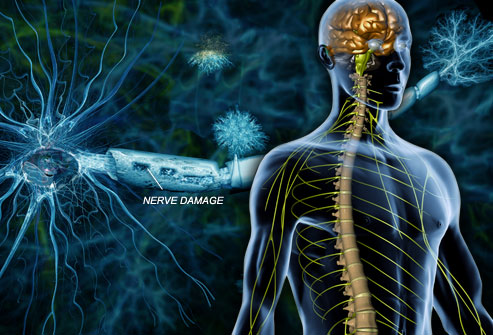Using Marijuana to Treat Diabetic Nerve Pain

A new randomized, controlled study from the University of California at San Diego has shown that inhaling cannabis can blunt diabetic neuropathic pain for several hours.
“We found that the more concentrated the dose, the more relief people got,” says lead author Mark Steven Wallace, MD, chair of the Division of Pain Management at the University of California, San Diego.
In the study, published in the July issue of the Journal of Pain, Dr. Wallace and his team recruited 16 patients with pain in their feet from diabetes-related nerve damage. They randomly assigned them to inhale one of three doses of cannabis using vaporization, a process that heats the leaf enough to release the active ingredients but not hot enough to flash the leaf into smoke. (This method makes pot’s effects peak faster and avoids the hazardous carbon monoxide associated with burning the leaves.) Some participants got a placebo. After a two week-break, they crossed over to a different dosage and repeated the test.
While participants did get high—they reported euphoria and sedation according to their dose, they also reported effective pain relief. They rated their spontaneous pain lower, and were also less bothered by a gentle stroke with a foam brush and a pinprick with a thin probe on their more painful foot. The pain relief lasted four hours, with the placebo group experiencing a pain intensity score that was higher than all the treatment groups. The testers who inhaled the highest dose reported the least pain.
“There is a lot of evidence on the positive effects of cannabis on the treatment of neuropathic pain,” Dr. Wallace says. “However, there are few placebo controlled studies and very few studies that have looked at different doses.”
How Pot Works on Pain
There are cannabinoid receptors on inflammatory cells as well as throughout the nervous system—nerves, spinal cord and brain, Dr. Wallace explains. When these receptors are stimulated, the result is pain relief and a decrease in inflammation.
This was the first study of its kind to also look at the cognitive effects of cannabis, and Wallace and team were pleased to find the effects minimal.
These findings are especially important, Dr. Wallace notes, because neuropathic pain is widespread, affecting some 60 to 70 percent of people with diabetes, according to National Institutes of Health data, and few good medications exist to help manage it. “Diabetic peripheral neuropathy is one of the most common neuropathic pain syndromes in our society,” he explains, exceeded only by low back pain. “There are very few treatment options and most of the medications available have dose-limiting side effects.”
Dr. Wallace and team see inhaled cannabis as a viable option for controlling neuropathic pain. “Medicinal marijuana has been legal in California since 1996, and we have learned a lot during this time,” he says. “I frequently recommend medicinal marijuana to treat a variety of painful conditions.”
And what about the “high” factor? It may limit clinical use, Dr. Wallace admits. However, there is component of marijuana called cannabidiol that doesn’t seem to make people high. Dr. Wallace is optimistic about its future use for pain control.
Article by: Aviva Patz
Article Source: EndocrineWeb.com

1 Comment
[…] There are cannabinoid receptors on inflammatory cells as well as throughout the nervous system—nerves, spinal cord and brain. When these receptors are stimulated, the result is pain relief and a decrease in inflammation. Read more here. […]